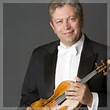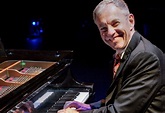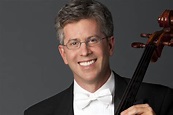November 16 – Gunn Theater, Palace of the Legion of Honor
The trio of Brarantschik, violin; Wyrick, cello; Nel, piano presented a breathtaking concert of Beethoven trios. The musicians selected three magnificent trios. These artists master the intertwining collaborations of each instrument. It leaves the audience to wonder how they do it and how lucky they, the audience, are to be there.
 Alexander Barantschik, violin, San Francisco Symphony’s Concertmaster. Previously he was concertmaster of the Bamberg Symphony Orchestra, London Symphony Orchestra, and Netherlands Radio Philharmonic. He performs as soloist and chamber musician. As concertmaster of the London Symphony, he toured Europe, Japan, and the US.
Alexander Barantschik, violin, San Francisco Symphony’s Concertmaster. Previously he was concertmaster of the Bamberg Symphony Orchestra, London Symphony Orchestra, and Netherlands Radio Philharmonic. He performs as soloist and chamber musician. As concertmaster of the London Symphony, he toured Europe, Japan, and the US.
The program began with Beethoven’s Piano Trio in E-flat major, Opus 1, no.1,1795. The title including “Opus 1, no.1” shows that he felt he was at the true beginning of his career. He had created other compositions and presented them in private performances, but this Trio was to be published and performed with different expectations. It is a mature piece. He plays with his ideas and technical construction of the interaction of the the three instruments. The Allegro sounded light and active as he allows dashing music while he adds brief ornaments. In the Adagio, we hear singing in the piano’s solo. Violin and cello carefully join in a quieter, even solemn mood, but that does not last. The Scherzo: Allegro assai has suggestions. The music plays hide and seek as it changes, stops, returns. The Finale: Presto lets us hear the intensity of Beethoven’s desires as the piano has a quizzical position that receives the answers from violin and cello. He takes note of the first movement, and all three combine in a Beethoven upright and quick end.
 Anton Nel, piano, is a recitalist, concerto soloist, chamber musician, and teacher. He has appeared internationally at Wigmore Hall, the Concertgebouw, Suntory Hall, and major venues in China, Korea, and South Africa. He has the Lozano Long Endowed Chair at the University of Texas, Austin, and teaches at the Aspen and Ravinia Festivals.
Anton Nel, piano, is a recitalist, concerto soloist, chamber musician, and teacher. He has appeared internationally at Wigmore Hall, the Concertgebouw, Suntory Hall, and major venues in China, Korea, and South Africa. He has the Lozano Long Endowed Chair at the University of Texas, Austin, and teaches at the Aspen and Ravinia Festivals.
Variations in G major on “Ich bin der Schneider Kakadu,” Opus 121a, 1794-1804=3? (rev. 1816). This piece has many variations, moods, and possibly a humorous point of view under the serious technique. The inspiration came to Beethoven through the song “Ich bin der Schneider Kakadu.” That means “I am the Tailor Kakadu.” The composer was Wenzil Muller, a composer of light songs for his singspiel. It could be an ancestor of musical comedy. The dates above show that there are many questions about when Beethoven wrote this work of ten variations. It could have popped into his mind very soon after he first heard it or maybe he remembered it years later, but it is the variations that make this piece. With thanks to James M. Keller, program annotator, “contrapuntal possibilities (as in the canons of Variations V and VII) deconstructing the theme (Variation VI), subjecting it to syncopation(Variation X).” There are more. Beethoven came upon more ideas which were put in the Allegretto coda as he tried to sell it in 1816.
 Peter Wyrick, cello, was a member of the San Francisco Symphony 1986-’89. He returned to SFS as Associate Principal Cello, 1999-2013, retiring in 2024. Previously, he was Principal cello of the Mostly Mozart Orchestra and associate Principal cello of the New York City Opera. He been soloist with SFS in C.P.E. Bach’s Cello Concerto in A, Bernstein’s Meditation No.1 from Mass, music of Tan Dun’s Crouching Tiger, Hidden Dragon.
Peter Wyrick, cello, was a member of the San Francisco Symphony 1986-’89. He returned to SFS as Associate Principal Cello, 1999-2013, retiring in 2024. Previously, he was Principal cello of the Mostly Mozart Orchestra and associate Principal cello of the New York City Opera. He been soloist with SFS in C.P.E. Bach’s Cello Concerto in A, Bernstein’s Meditation No.1 from Mass, music of Tan Dun’s Crouching Tiger, Hidden Dragon.
Piano Trio in B-flat major, Opus 97, Archduke marks a painful change in Beethoven’s work. This piece, composed in 1811, was the last time he would perform. His hearing had gone too far. The piece was not performed until 1814. It was too late. The Archduke in the title was Archduke Rudolf who was younger brother of Emperor Francis I. Beethoven taught piano to the Archduke; they were as close as they could be, given Beethoven’s non-royal background. This Piano Trio has presence just as a royal Trio should be. The cello leads the melodic first movement, Allegro moderato. The strings have a wonderful, pizzicato Scherzo time, delightful, almost strange, but completely together. The Andante cantabile, slow and touching, adds four variations. This movement has warmth that reaches out to keep the spirit around us. The music takes us back to Allegro moderato, though it calls all to a sharp, fast, rondo finale.
Benjamin Pesetsky quoted Louis Spohr, violinist and composer, who remembered how Beethoven “pounded on the keys until the strings jangled, and in piano he played so softly that whole groups of tones were omitted…I felt moved with the deepest sorrow at so hard a fate.”